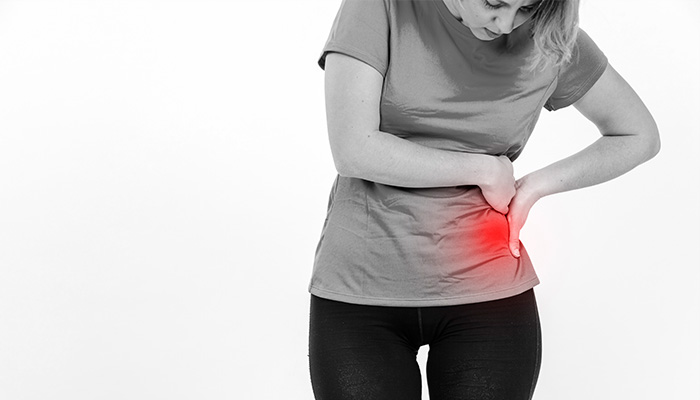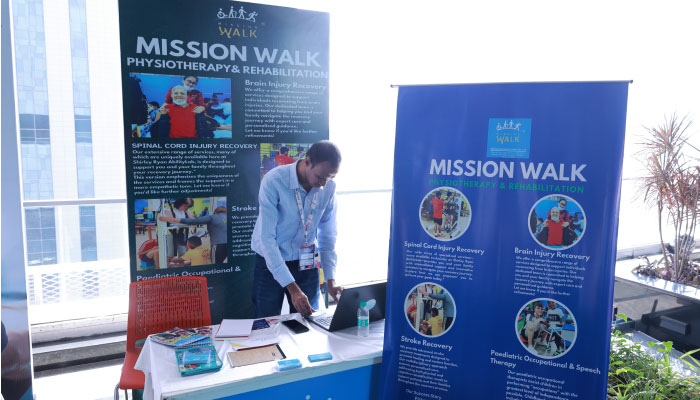Using a car or bike, or for that matter any other vehicle, for a long time can wear out their parts and the vehicle can no longer be used. Therefore, to keep the parts from wearing away we use lubricants that reduce the friction between two rubbing edges, and prevent wearing off the vehicle parts. If this is the condition of a hard built vehicle, then imagine what will happen to our body parts, which work continuously till our death. When we walk, sit, lie down or do any work our bones rub against the ligaments, muscles, and tendons surrounding it in the joints; to prevent wearing out of the bones our body has a small bag like structure called the bursa that produces a fluid called the synovial fluid, which acts as a lubricant for the bones. Bursae are present in all parts of the body, especially in the hip, knee, elbow, shoulder, and ankle region.
The hip bursa
Our body is a very complicated system made up of cells, tissues, bones, and muscles. Bones form the basal structure as they give a perfect shape to our body. A joint is a place where two bones meet. Similarly, the hip region is also made by joining of the thigh bone (femur) with the three pelvic bones, the ilium, the pubis, and the ischium. It is a ball and socket joint where the ball of the femur locks itself in the socket of the hipbone. The hip joint is the largest joint in human body and it bears the maximum weight of our body. The weight on the hip joint during walking can be 5 times that of the weight of the person. A healthy hipbone can support this weight and do not cause any pain while moving, but if the hipbone is disturbed by injury or any disease, it changes the way a person walks and puts abnormal pressure on the hip bone. Any weight bearing bone in our body is protected by articular cartilage, which has a thin, slippery, tough, flexible surface that is lubricated by the synovial fluid. The synovial fluid is produced by a fluid filled sac called bursa.
Bursitis of the hip
Bursitis is a condition where the bursa swells badly and results in pain. The bursa helps the tendons, ligaments, and muscle glide smoothly over the bones. But in case of bursitis, where the bursa gets swollen and the area surrounding it becomes very tender and painful. If bursitis occurs in the hip bursa, it is called as trochanteric bursitis. Bursitis may be acute (short-lived) or chronic (long-lived), and it may occur in the bursae present in the shoulder, elbow, and knee joint. Bursitis is very common in older individuals and in young individuals who are physically active.
Causes
The common causes of hip bursitis are
- Excessive and repetitive use of the hip joints or stressing the hipbone by activities like running, bicycling, and stair climbing
- Injury to the hipbone
- Bacterial infection, such as staphylococcus aureus
- Rheumatoid arthritis (joint pain)
- Gout (formation of uric acid crystals in one or more joints)
- Pseudo gout
- Diabetes
- Problem with spine
- Uneven length of the legs
- Bone spurs on the hip, a condition where a bony growth or calcium deposit is seen on the normal bone
- Surgery or prosthesis implantation in the hip region
Symptoms
Bursitis causes pain and tenderness in the joint. The pain may be sharp in the first few days, and later become dull and achy. The pain may increase while getting up from bed, chair, or while sitting for a long time or while lying on the affected side. There may be swelling and redness in the hip region; it may also be warm to touch. Pain can also be present when the outside of hip is pressed; the pain may spread outside the thigh region. Overtime, acute bursitis can become chronic. Chronic bursitis lasts for several weeks, or it can go and come back again.
Diagnosis
Bursitis is diagnosed based on the symptoms told by the patient. Based on this, the doctor will perform a physical examination for hip bursitis while the patient is lying on his/her side. The doctor checks for tenderness and swelling. To rule out other possible conditions, the doctor may also recommend an X-ray, magnetic resonance imaging study, and bone scanning test to confirm hip bursitis. In some cases, a small amount of fluid is drawn from the bursea and checked for any infection.
Treatment
A person with hip bursitis should rest as much as possible. Non-steroid anti-inflammatory drug such as ibuprofen or naproxen are prescribed to relieve pain and swelling. Ice packs can be used on the affected region to reduce swelling. Once the pain subsides, doctor may recommend few exercises to prevent atrophy of the region. Physical therapy might be suggested in patients who find difficulty in moving (chronic bursitis). Use of walking cane or crutches may be used for a short period of time or whenever necessary. If the above said doesn’t work, then the patient might be given a steroid/corticosteroid shot to reduce pain and swelling. In few cases, the fluid from the bursa is taken out to relieve pain and swelling. If all the treatment fails, the final option left is surgery, which involves removal of bursa from the hip region. The person (hip) can function normally without a bursa.
Prevention
Hip bursitis can be prevented by following few preventive measures.
- Avoid straining the hip too much
- Do not indulge in any activity that is too difficult or might increase the pain
- Before exercising, warm up and then start exercising to avoid injuries
- If overweight, then reduce weight
- If pain persists, apply ice on the region
- Do exercises that builds up strength and flexibility in the hip region
- During exercise pad up well and use a cushion surface to avoid bursitis
- Keep moving, do not kneel or sit or put strain on one joint for a long time, get up and walk frequently
- Run and walk on a flat and even surface
Outlook
Bursitis is a condition that can be avoided. If the patient finds that some activity is increasing his/her stress on the hip or if they are experiencing pain while doing some activities they should stop doing it right away. Contact the physician and ask him about the activities or exercises that will help to get away from the pain. If the patient is a sports person then injuries should be avoided by adopting proper techniques and equipments. Try to know the cause of bursitis and avoid them or treat them. A person with bursitis can go back to normal life by just being careful and taking every measure to prevent it.



